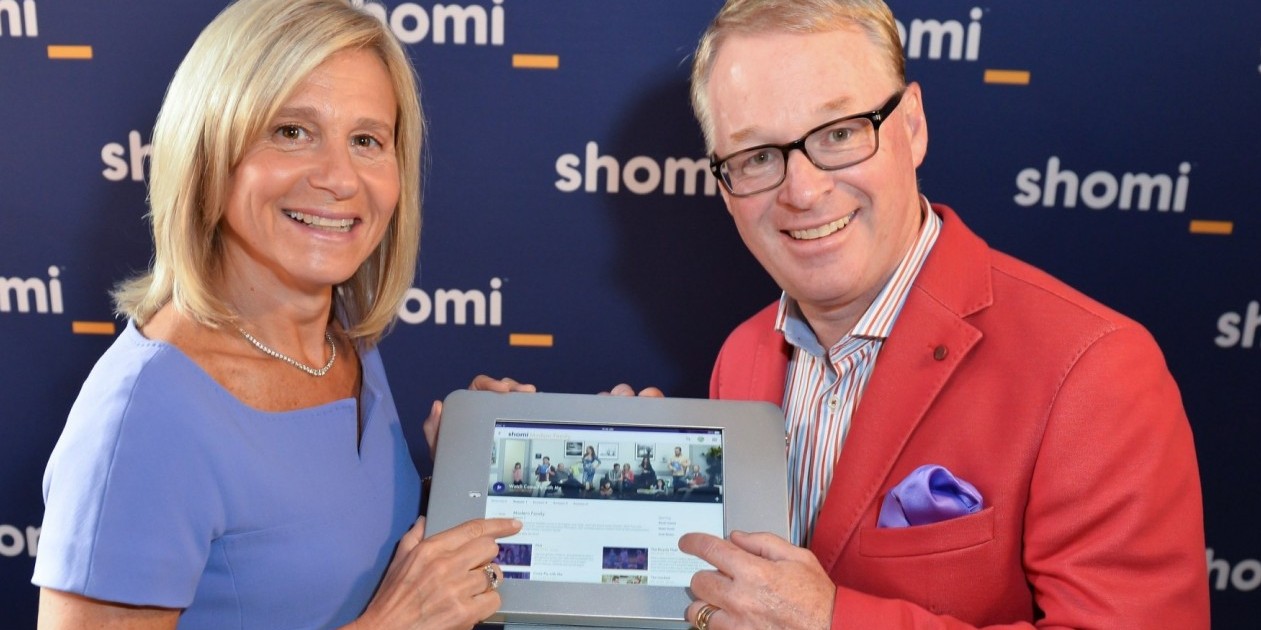It was in December, shortly after taking over as president and CEO of Rogers Communications, that Guy Laurence first talked with Rogers Media president Keith Pelley about the Loch Ness Monster.
That would become Laurence’s code name for Rogers’ proposed streaming video-on-demand (SVOD) service, shomi. Like the mythical Scottish monster, shomi was a long-standing – and, to media watchers, frustratingly unverifiable – rumour. Just like its namesake, it would become a source of widespread interest and speculation.
“[Laurence] really wanted to accelerate it based on the fact the industry is definitely changing in the way people are consuming media,” said Pelley, recalling that December conversation. “He pulled me aside and said ‘I want the Loch Ness Monster rumour to become reality,’ and today it is.”
The code name became so pervasive that Rogers teased the launch of shomi (pronounced “show-me”) on Monday evening with an e-mail bearing the subject line: “The Loch Ness Monster: Product Launch & Demo.”
By 8 a.m. Tuesday, the mystery had been solved: The Loch Ness Monster was actually a new joint-venture partnership between Rogers and its cable and broadcast rival, Shaw Communications.
It will debut with more than 14,000 titles, including 1,200 movies and 11,000 hours of TV content drawn from the two companies’ conventional and specialty channels. Other content deals are in place, but have not yet been announced.
Pelley didn’t speak to reports that shomi invested $100 million on licensing fees, saying only that the amount spent on rights to series such as Sons of Anarchy, Sleepy Hollow, Chicago Fire and The Strain is “not insignificant.”
“We know that we have made a big enough commitment that we can provide consumers with a product that is terrific,” he said. Shomi is currently available on Rogers Cable and Shaw Cable, though Pelley said he’s “comfortable” that other providers (competitors like Bell, Telus and Videotron) will agree to offer the service by the launch date. It will be available via multiple platforms, including set-top boxes, tablet, mobile, online and Xbox 360.
While there will be some overlap with Netflix, Barb Williams, senior vice-president of content for Shaw Media, said “most” of the content will be exclusive to shomi. The companies will also strive to lock up exclusive rights deals as the business progresses, she said.
“One of the great values of the partnership we have is that collectively we bring a lot of great relationships to the table that I think will ensure we have a really great content offering,” said Williams.
The companies also pledged to create original programming for shomi, though they didn’t provide a timetable. “It’s definitely on our roadmap,” said Pelley, jokingly telling reporters that the service already has a series called Purple is the New Black (a nod to Netflix’s Orange is the New Black) in development.
Omicom Media Group Canada CEO Fred Forster predicted that original content would be key for the new venture. Netflix’s content creation expertise, embodied by Emmy-nominated series like Orange… and House of Cards, has helped attract consumers and drive revenue, he said.
“They’ve made some interesting innovations in the area of creating content based on data,” said Forster. “It costs money to produce content, and if you’re going to produce content, you’d better have a lot of revenue coming in. The balance for [showmi] is can they create original content that’s going to drive subscriptions and is going to be interesting and compelling enough that people are going to sign up.”
Addressing the biggest question about shomi, Pelley said the upstart service could “absolutely” compete against its established rival Netflix, which is now used by more than one third of English Canadians.
Shomi has a superior user interface and more recent TV content, said Pelley, and will also act as a new “video-age clerk,” using a combination of algorithms and insight to recommend titles to users.
“You can’t create emotion through code,” said Pelley. “The approach we’ve taken with our entertainment experts is not something to be taken lightly.”
Pelley hinted that the service could feature recommendations from Rogers and Shaw personalities. “It’s just like going to [book store Indigo] and seeing ‘Heather’s Picks,’” said Pelley.
However, he stressed that it doesn’t have to be an either or scenario for consumers, citing research suggesting that consumers could “undeniably” support multiple SVOD services such as Netflix, Hulu and shomi.
“We know that if there’s value for consumers, they’re willing to stack these services,” added Williams. “The key to having value is not only the price-point, but having distinctive quality content.”
Forster characterized shomi as a defensive move, particularly as competing over-the-top services like Netflix appear poised to steal market share from traditional broadcasters like Shaw’s Global Television and Rogers’ City.
The question, he said, is whether consumers are willing to spend more to add another service. “Are people going to pay $8.99 to see reruns of Modern Family? I don’t know. The jury’s still out,” he said. “I guess it’s probably not expensive to repurpose your existing content that you already own the rights to and sell it on another platform.”
The launch comes at a hectic time for both companies, as they gear up for the CRTC’s potentially game-changing “Let’s Talk TV” hearings and the start of a new TV season that, for Rogers, also marks the beginning of its new 12-year NHL rights deal.
“We launch a lot of stuff in September and October in our world, so it was valuable to get this piece of the announcement out ahead of all that fall noise,” said Williams. “We wanted to get the announcement out well in advance of the launch to get consumers excited and get the BDUs [Broadcast Distribution Undertakings] understanding how big and exciting it can be.”











